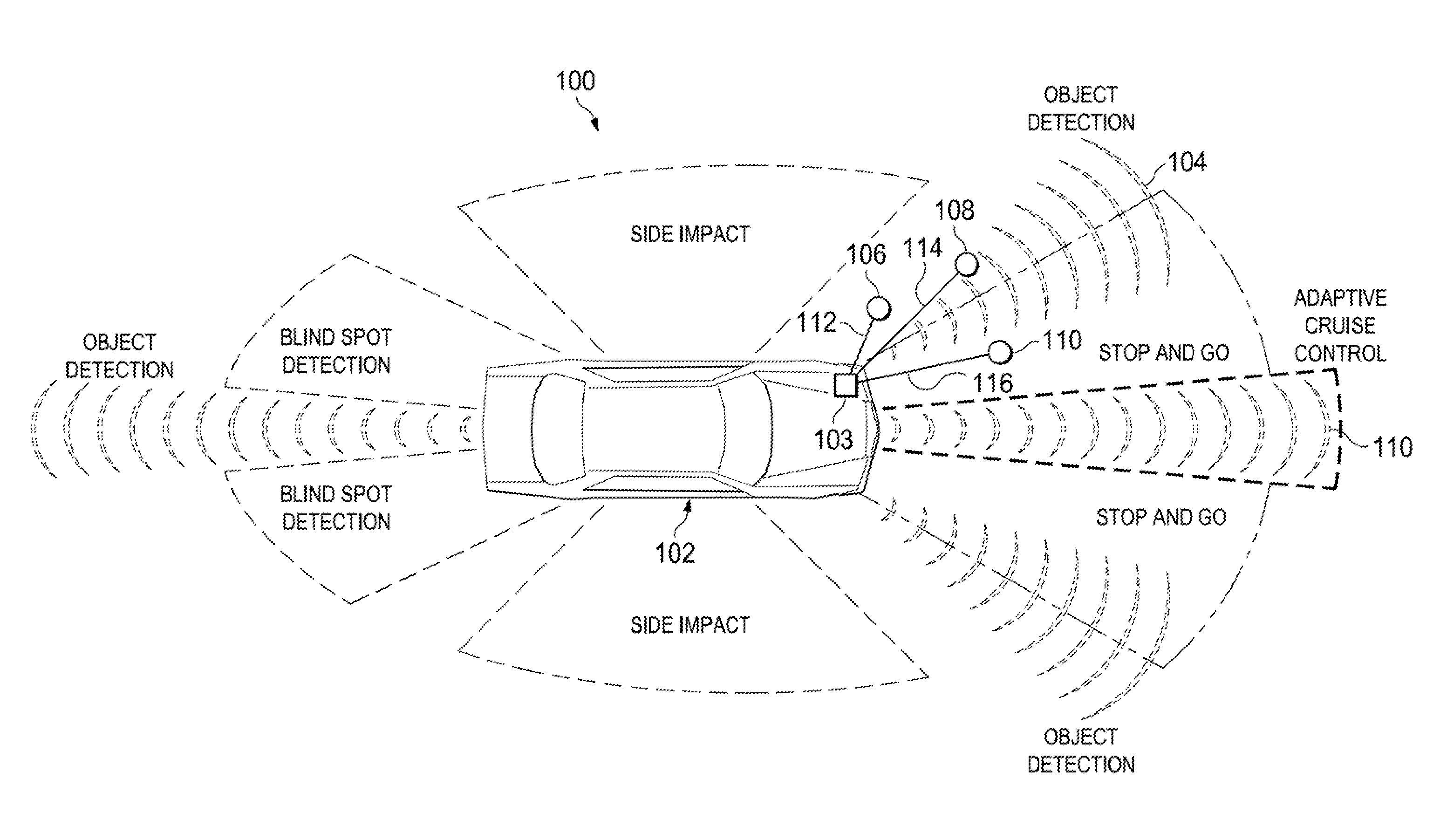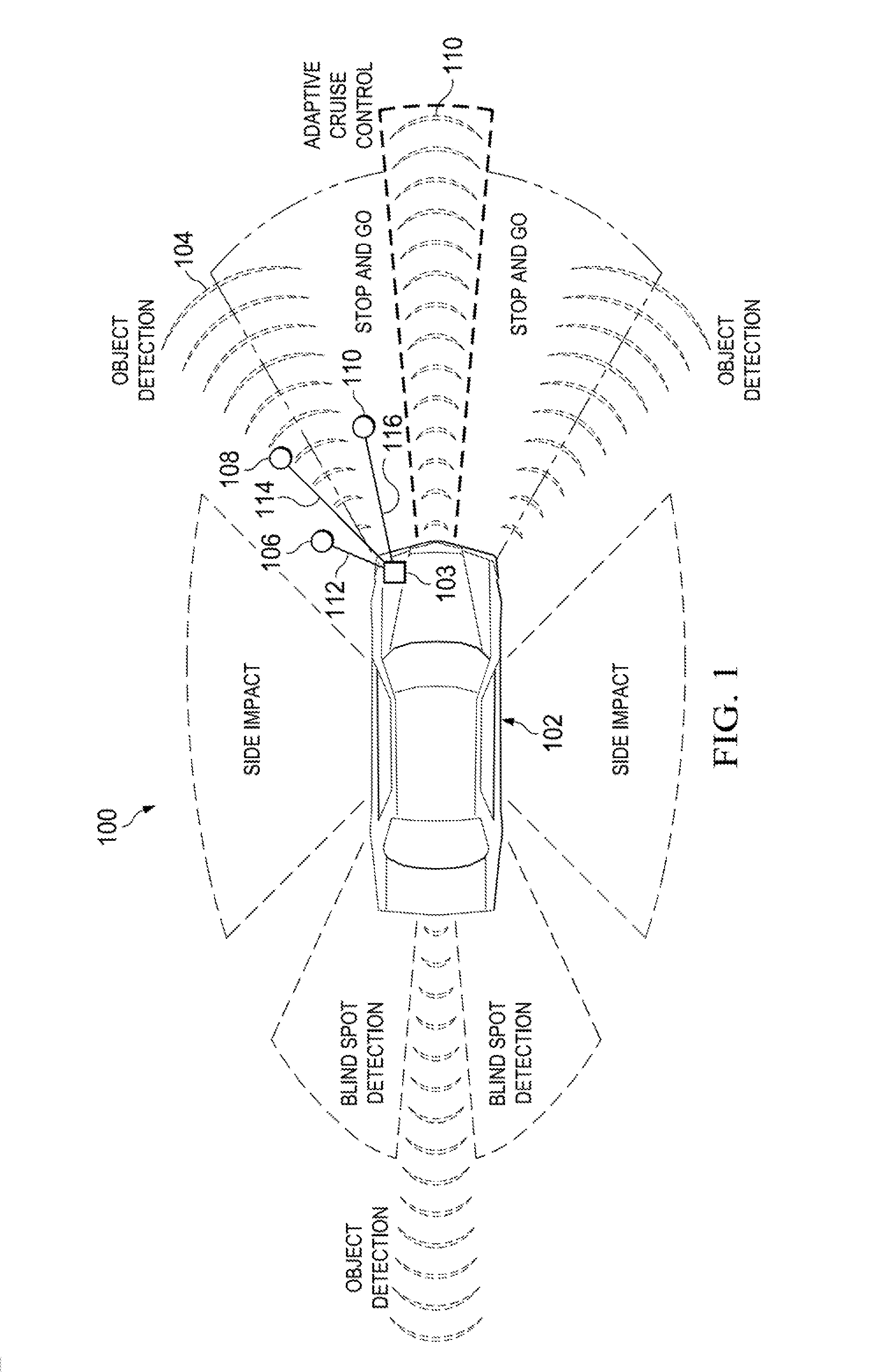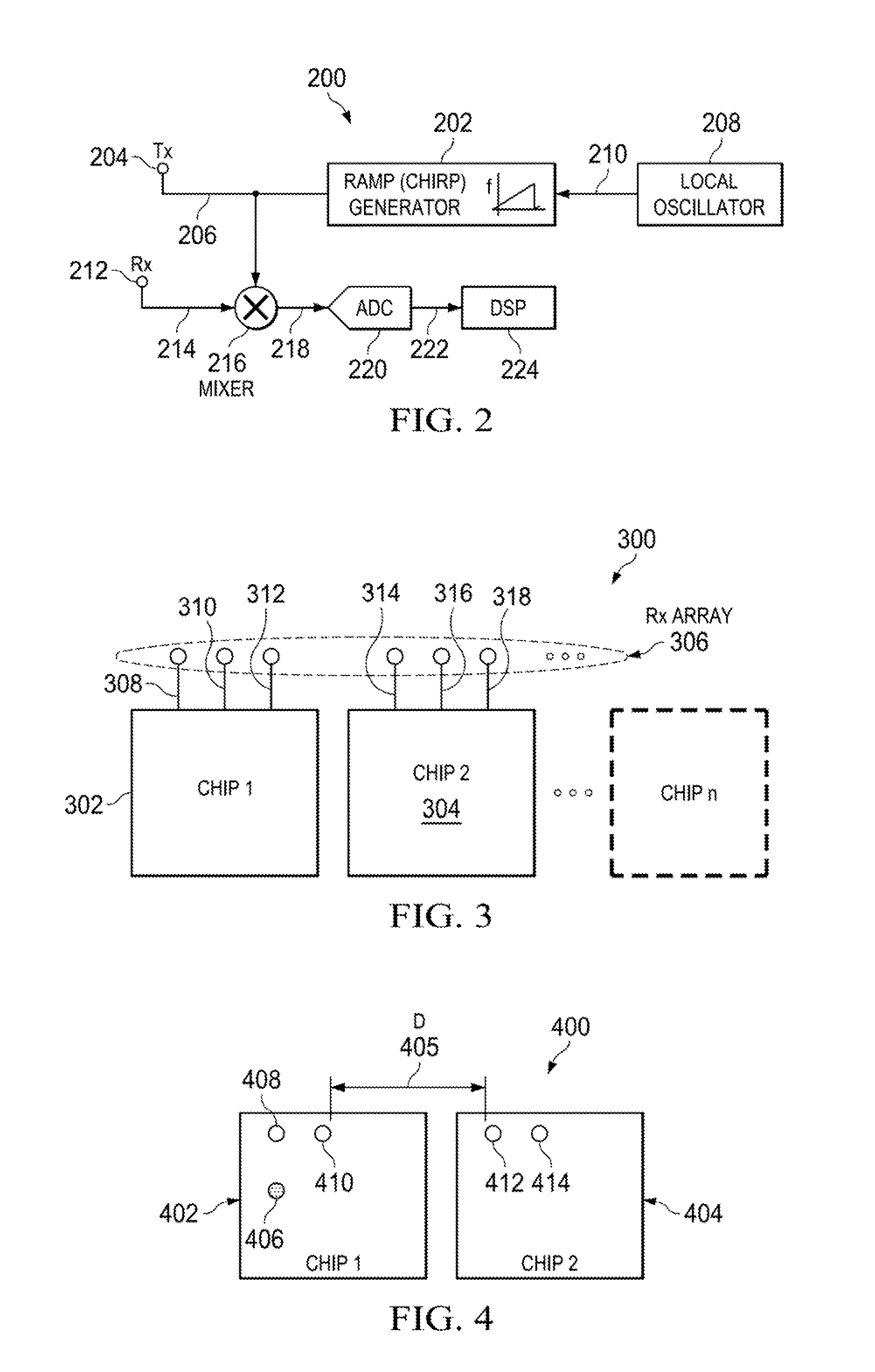Techniques for high arrival angle resolution using multiple nano-radars
a nano-radar and angle resolution technology, applied in the field of radar systems, can solve the problems of unmodulated signal, inapplicability, loss, etc., and achieve the effects of eliminating the many disadvantages of conventional, costly external antenna arrangements, and avoiding the extensive radar chip customization
- Summary
- Abstract
- Description
- Claims
- Application Information
AI Technical Summary
Benefits of technology
Problems solved by technology
Method used
Image
Examples
Embodiment Construction
[0052]Aspects of the present invention are drawn to a technique known as “Sparse Antennas,” used in the context of tiling a plurality of standard radar chips to form long receive antenna arrays.
[0053]One aspect of the present invention is drawn to the use of one or more standard radar chips containing two or more embedded receive antennas together with one or more standard radar chips containing two or more embedded receive antennas as well as two or more embedded transmit antennas, all chips being arranged in a tiled configuration. The configuration operates together with an implementation of the sparse antenna technique to fill large gaps between “real” embedded receive antennas with “virtual” antennas. This produces a receive antenna array consisting of a number of both real and virtual antennas but which is mathematically equivalent to an array of the same number of real antennas.
[0054]Other aspects of the present invention are drawn to additional systems and methods designed to...
PUM
 Login to View More
Login to View More Abstract
Description
Claims
Application Information
 Login to View More
Login to View More - Generate Ideas
- Intellectual Property
- Life Sciences
- Materials
- Tech Scout
- Unparalleled Data Quality
- Higher Quality Content
- 60% Fewer Hallucinations
Browse by: Latest US Patents, China's latest patents, Technical Efficacy Thesaurus, Application Domain, Technology Topic, Popular Technical Reports.
© 2025 PatSnap. All rights reserved.Legal|Privacy policy|Modern Slavery Act Transparency Statement|Sitemap|About US| Contact US: help@patsnap.com



